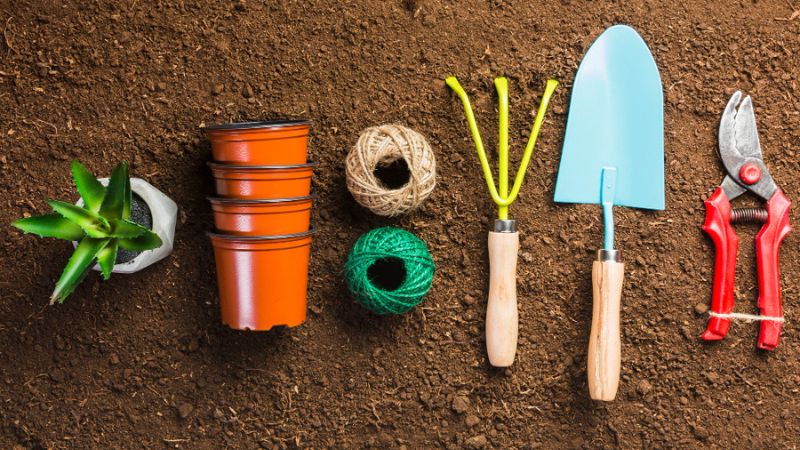Mulch plays a vital role in landscaping and gardening, offering a plethora of benefits ranging from moisture retention to weed suppression. Choosing the right type of mulch can enhance the aesthetic appeal of your garden while promoting plant health. In this comprehensive guide, we’ll explore seven types of mulch commonly used in landscaping and gardening, discussing their characteristics, advantages, and suitable applications. Whether you’re a seasoned gardener or a novice enthusiast, understanding these mulch varieties will help you make informed decisions to optimize your outdoor space.
1. Organic Mulch

Organic mulches, such as shredded bark, wood chips, and compost, are derived from natural materials. They decompose over time, enriching the soil with essential nutrients and improving its structure. Additionally, organic mulches regulate soil temperature, reduce erosion, and suppress weed growth. Their biodegradable nature makes them an environmentally friendly choice for sustainable gardening practices. However, organic mulches require periodic replenishment as they break down.
2. Inorganic Mulch
Unlike organic mulches, inorganic mulches consist of non-living materials like gravel, stone, and rubber. These mulches do not decompose and offer long-lasting weed control and soil moisture retention. They are ideal for areas prone to erosion or where regular mulch replacement is impractical. Inorganic mulches can also reflect sunlight, keeping soil temperatures cooler during hot weather. However, they do not contribute organic matter to the soil and may require occasional cleaning to maintain their appearance.
3. Shredded Leaves
Shredded leaves are an excellent option for mulching, especially for gardeners seeking a cost-effective and eco-friendly solution. Fallen leaves can be collected and shredded to create a nutrient-rich mulch that improves soil structure and promotes microbial activity. Shredded leaves also help retain moisture, suppress weeds, and insulate plant roots during extreme temperatures. Additionally, they are readily available in most residential landscapes, making them a convenient choice for sustainable garden management.
4. Pine Straw

Pine straw, also known as pine needles, is a popular mulch in regions where pine trees are abundant. It provides excellent insulation, keeping soil temperatures consistent and protecting plant roots from temperature extremes. Pine straw also decomposes slowly, enriching the soil with organic matter and acidity, which benefits acid-loving plants like azaleas and blueberries. Its fine texture and natural appearance make it an attractive option for various landscape designs.
5. Cocoa Bean Mulch
Cocoa bean mulch, made from cocoa shells, is not only visually appealing but also beneficial for soil health. It has a rich, chocolatey aroma and dark color that adds aesthetic value to garden beds and pathways. Cocoa bean mulch decomposes slowly, releasing nutrients into the soil and improving its fertility. However, it should be used cautiously around pets, as cocoa bean mulch contains theobromine, which can be toxic to dogs if ingested in large quantities.
6. Grass Clippings
Grass clippings offer a readily available mulching material for gardeners with lawns. Instead of disposing of grass clippings after mowing, they can be recycled as mulch to enrich the soil and suppress weed growth. Grass clippings decompose quickly, providing a source of nitrogen and other essential nutrients to plants. However, it’s essential to use dry, untreated grass clippings to avoid introducing weed seeds or chemicals into the garden.
7. Rubber Mulch

Rubber mulch, made from recycled tires, is a durable and long-lasting option for landscaping projects. It effectively suppresses weeds, retains moisture, and provides insulation for plant roots. Rubber mulch is available in various colors and textures, allowing for creative landscape designs. Additionally, it helps reduce landfill waste by repurposing old tires into a useful gardening material. However, some gardeners may have concerns about the environmental impact of using rubber mulch and its potential to leach chemicals into the soil.
Conclusion
Choosing the right type of mulch is essential for maintaining a healthy and vibrant garden. Whether you opt for organic mulches like shredded bark and compost or prefer inorganic options such as gravel and rubber, understanding the characteristics and benefits of each type will help you make informed decisions. By incorporating mulch into your landscaping and gardening practices, you can conserve water, suppress weeds, improve soil fertility, and enhance the overall beauty of your outdoor space. Experiment with different mulch varieties to discover which ones best suit your garden’s needs and aesthetic preferences.

